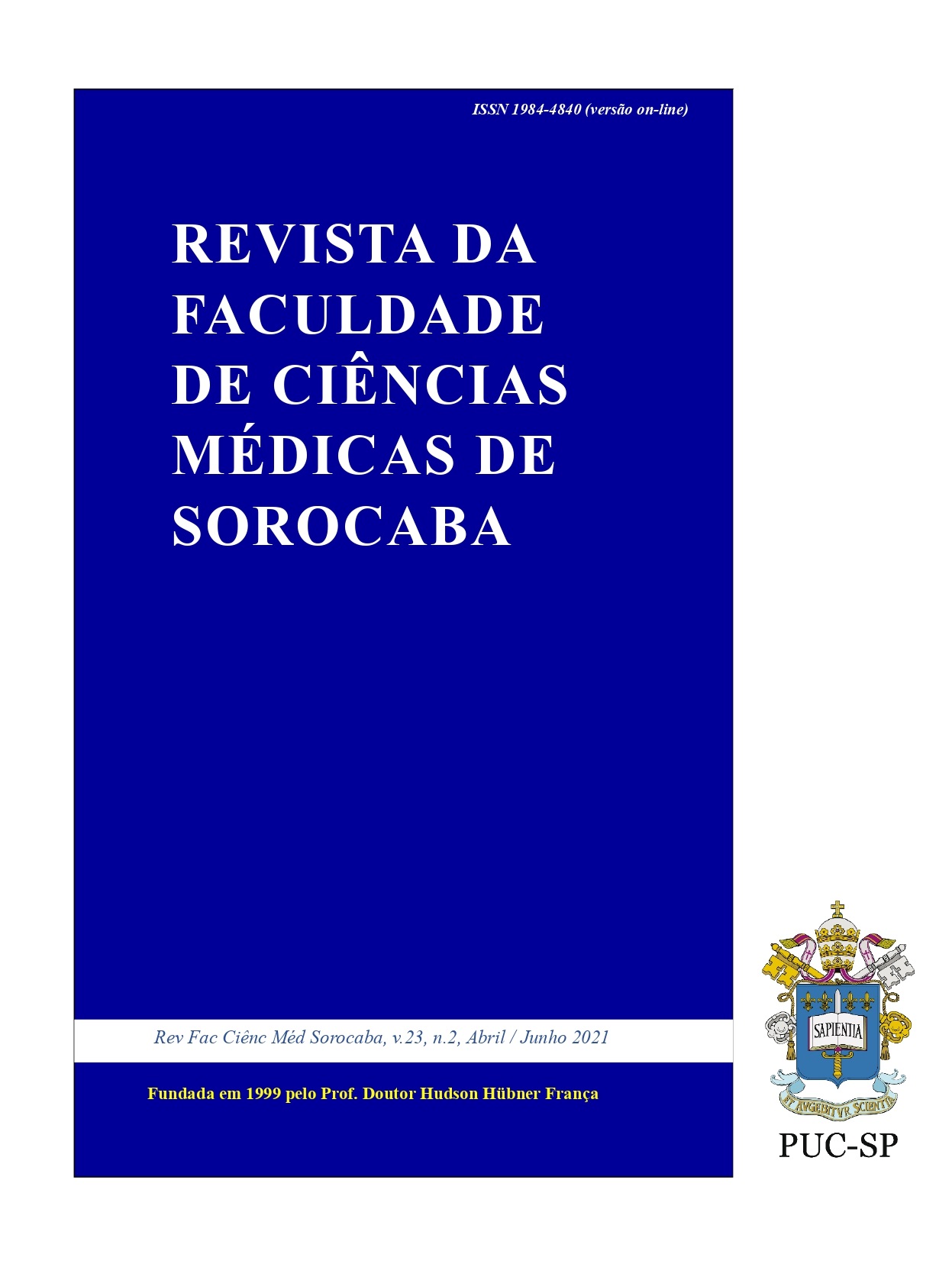Influence of late administration of exogenous surfactant on the clinical course of very preterm infants.
DOI:
https://doi.org/10.23925/1984-4840.2021v23i2a2Keywords:
Respiratory Distress Syndrome, Newborn, Surface-Active Agents, Infant, Premature, Infant, Very Low Birth WeightAbstract
Objective: To assess whether the timing of surfactant administration influences the clinical evolution of very preterm infants. Methods: Observational study using data prospectively collected from very preterm infants and their mothers, divided into two groups: group 1 = 28 weeks to 29 weeks and 6 days, group 2 = 30 weeks to 31 weeks and 6 days. Each group was divided in early surfactant administration (until two hours of life) and late surfactant administration (more than two hours of life) and then, compared in terms of perinatal characteristics, the presence of morbidities and mortality. Continuous variables were compared using the Student's t test or non-parametric test; categorical variables were compared using the chi-square test. Logistic regression was used to assess the association between the significant variables. The statistical package SPSS 16.0 was used and a value of p<0.05 was considered significant. This study was approved by the research ethics committee. Results: Six hundred preterm infants were evaluated in group 1 and 503 in group 2. Early surfactant administration in group 1 was more frequently in lower weight and gestational age preterm at birth and was associated to severe peri and intraventricular hemorrhage; in the two groups, the need for orotracheal intubation in the delivery room increased the chance of early administration of exogenous surfactant. Morbidity and mortality were not different between the groups. Conclusions: The timing of surfactant administration did not influence clinical evolution and neonatal mortality in very preterm infants.
References
Krouskop RW, Brown EG, Sweet AY. The early use of continuous positive airway pressure in the treatment of idiopathic respiratory distress syndrome. J Pediatr. 1975;87(2):263–7. doi: 10.1016/s0022-3476(75)80599-3.
Saunders RA, Milner AD, Hopkin IE. The effects of continuous positive airway pressure on lung mechanics and lung volumes in the neonate. Biol Neonate. 1976;29(3–4):178–86. doi: 10.1159/000240862.
Morley C. Continuous distending pressure. Arch Dis Child Fetal Neonatal Ed. 1999;81(2):F152–6. doi: 10.1136/fn.81.2.f152.
Bancalari E, del Moral T. Continuous positive airway pressure: early, late, or stay with synchronized intermittent mandatory ventilation? J Perinatol. 2006;26(1): S33–7. doi: 10.1038/sj.jp.7211471.
Volsko TA. Devices used for CPAP delivery. Respir Care. 2019;64(6):723–34. doi: 10.4187/respcare.06625.
SUPPORT Study Group of the Eunice Kennedy Shriver NICHD Neonatal Research Network; Finer NN, Carlo WA, Walsh MC, Rich W, Gantz MG, Laptook AR, et al. Early CPAP versus surfactant in extremely preterm infants. N Engl J Med. 2010;362(21):1970–9. doi: 10.1056/NEJMoa0911783.
Dunn MS, Kaempf J, de Klerk A, de Klerk R, Reilly M, Howard D, et al. Randomized trial comparing 3 approaches to the initial respiratory management of preterm neonates. Pediatrics. 2011;128(5):e1069–76. doi: 10.1542/peds.2010-3848.
Bahadue FL, Soll R. Early versus delayed selective surfactant treatment for neonatal respiratory distress syndrome. Cochrane Database Syst Rev. 2012; 11(11):CD001456. doi: 10.1002/14651858.CD001456.pub2.
Ballard JL, Khoury JC, Wedig KL, Wang L, Eilers-Walsman BL, Lipp R. New Ballard Score, expanded to include extremely premature infants. J Pediatr. 1991;119(3):417–23. doi: 10.1016/s0022-3476(05)82056-6.
Fenton TR, Kim JH. A systematic review and meta-analysis to revise the Fenton growth chart for preterm infants. BMC Pediatr. 2013;13(1):59. doi: 10.1186/1471-2431-13-59.
Apgar V. A proposal for a new method of evaluation of the newborn. Clas Papers Critical Care. 1952;32(449):97.
Papile LA, Burstein J, Burstein R, Koffler H. Incidence and evolution of subependymal and intraventricular hemorrhage: a study of infants with birth weights less than 1,500 gm. J Pediatr. 1978;92(4):529–34. doi: 10.1016/s0022-3476(78)80282-0.
Roberts D, Brown J, Medley N, Dalziel SR. Antenatal corticosteroids for accelerating fetal lung maturation for women at risk of preterm birth. Cochrane Database Syst Rev. 2017; 3(3):CD004454. doi: 10.1002/14651858.CD004454.pub3.
Seikku L, Gissler M, Andersson S, Rahkonen P, Stefanovic V, Tikkanen M, et al. Asphyxia, neurologic morbidity, and perinatal mortality in early-term and postterm birth. Pediatr. 2016;137(6): e20153334. doi: 10.1542/peds.2015-3334.
Simon LV, Hashmi MF, Bragg BN. Apgar Score. 2017. In: StatPearls. Treasure Island (FL): StatPearls Publishing; 2022.
Leinonen E, Gissler M, Haataja L, Rahkonen P, Andersson S, Metsäranta M, et al. Low Apgar scores at both one and five minutes are associated with long-term neurological morbidity. Acta Paediatr. 2018;107(6):942–51. doi: 10.1111/apa.14234.
Sweet DG, Carnielli V, Greisen G, Hallman M, Ozek E, Te Pas A, et al. European consensus guidelines on the management of respiratory distress syndrome–2019 update. Neonatology. 2019;115(4):432–50. doi: 10.1159/000499361.
Weydig H, Ali N, Kakkilaya V. Noninvasive ventilation in the delivery room for the preterm infant. Neoreviews. 2019;20(9):e489–99. doi: 10.1542/neo.20-9-e489.
Drummond S, Souza TS, Lima FG, Vieira AA. Correlação entre o uso de corticoterapia antenatal, a reanimação e a mortalidade de recém-nascidos prematuros de muito baixo peso. Rev Bras Ginecol Obstet. 2014;36(5):211–5. doi: 10.1590/S0100-7203201400050005.
Downloads
Published
How to Cite
License
Copyright (c) 2023 Revista da Faculdade de Ciências Médicas de Sorocaba

This work is licensed under a Creative Commons Attribution-NonCommercial 4.0 International License.
Os autores no momento da submissão transferem os direitos autorais, assim, os manuscritos publicados passam a ser propriedade da revista.
O conteúdo do periódico está licenciado sob uma Licença Creative Commons 4.0, esta licença permite o livre acesso imediato ao trabalho e que qualquer usuário leia, baixe, copie, distribua, imprima, pesquise ou vincule aos textos completos dos artigos, rastreando-os para indexação, passá-los como dados para o software, ou usá-los para qualquer outra finalidade legal.

 Este obra está licenciada com uma Licença
Este obra está licenciada com uma Licença 